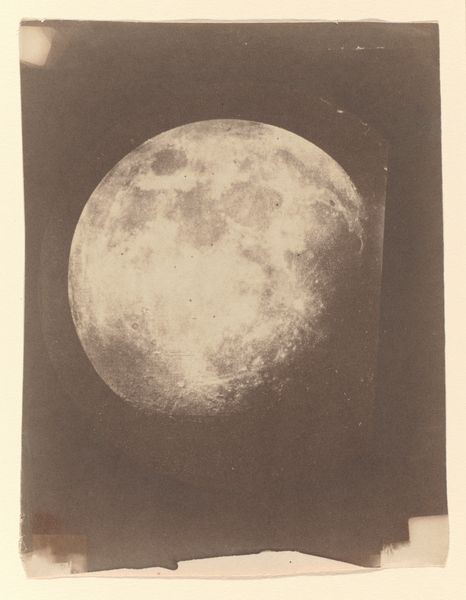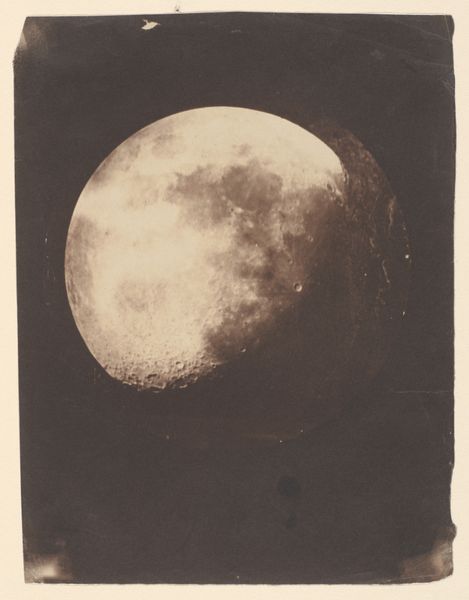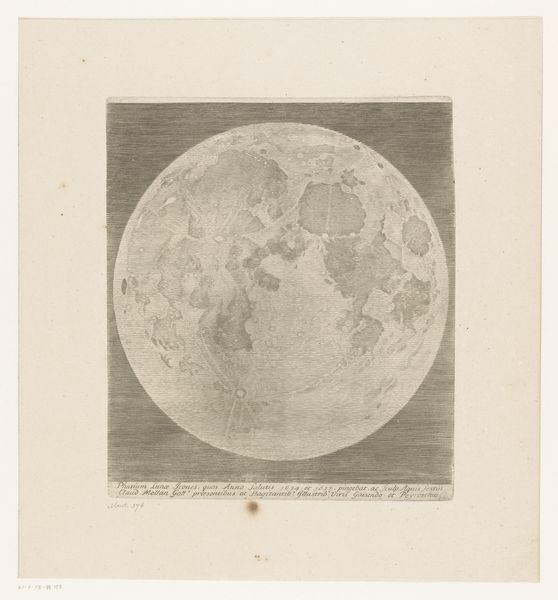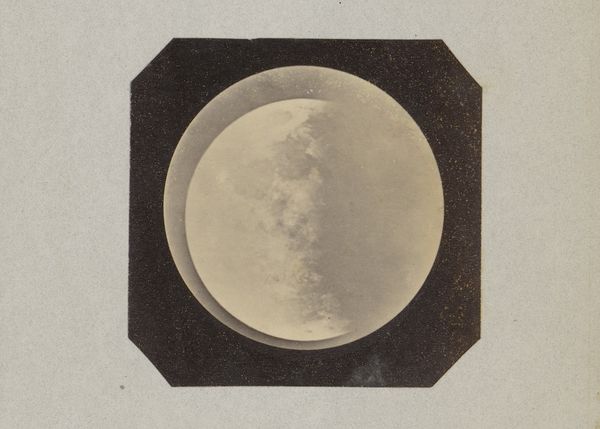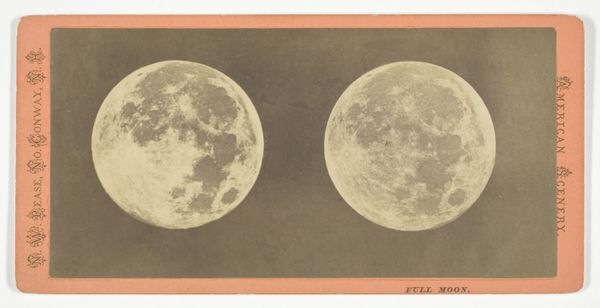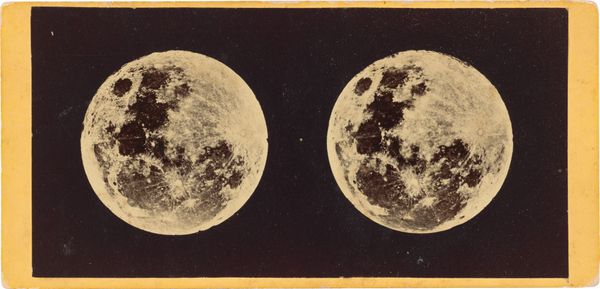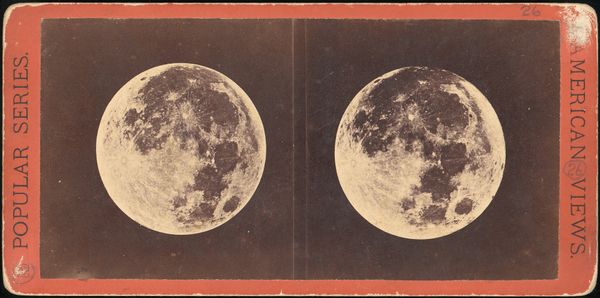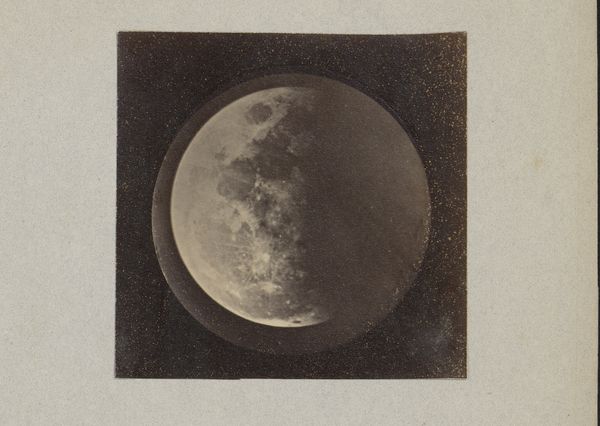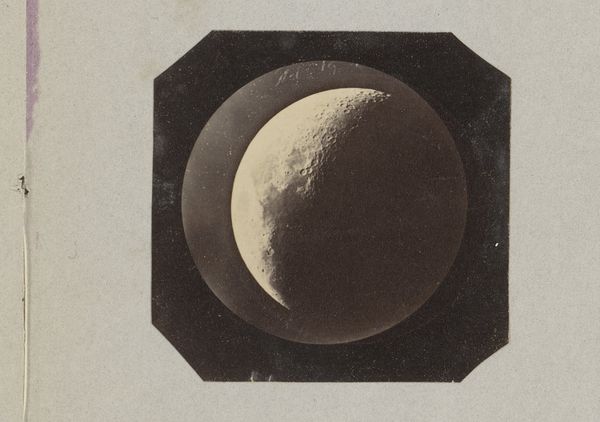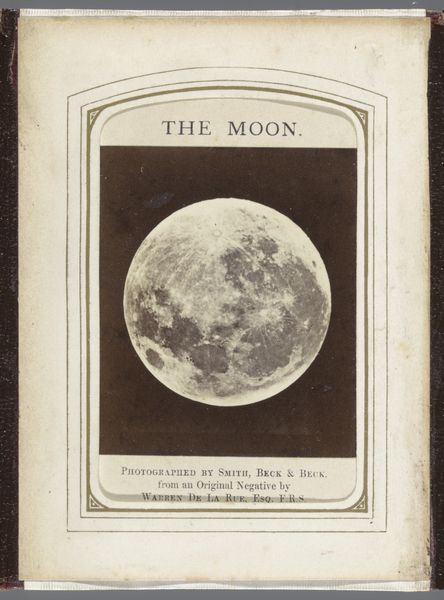
Dimensions: Sheet: 8 5/16 × 6 1/4 in. (21.1 × 15.8 cm)
Copyright: Public Domain
John Adams Whipple made this photograph of the moon using the daguerreotype process, one of the earliest forms of photography, in the United States. Think about what it meant to capture an image like this at the time. Photography was still relatively new, and the ability to document the world with such detail was revolutionary. The picture of the moon reflects the increasing interest in scientific observation and exploration during the 19th century. In this period, institutions like observatories and scientific societies played an important role in promoting these pursuits. This image also suggests the shift of photography entering into the sphere of art. This picture makes you wonder, can photography be art? Was Whipple trying to challenge people's perception of art? To truly understand this image, we might explore the history of science and technology during the 1800s, looking at the role of institutions that supported new technologies like photography. By considering its social and institutional context, we can appreciate its impact on how we see and understand the world around us.
Comments
No comments
Be the first to comment and join the conversation on the ultimate creative platform.

